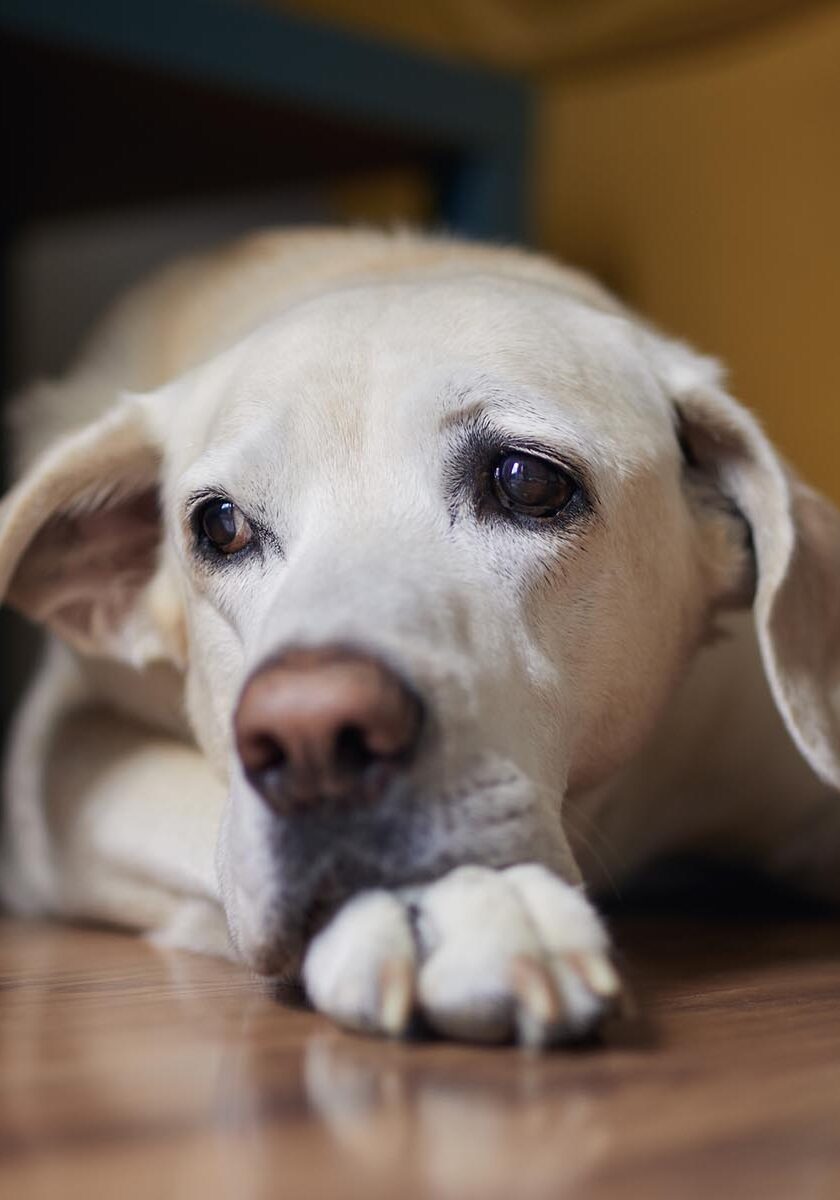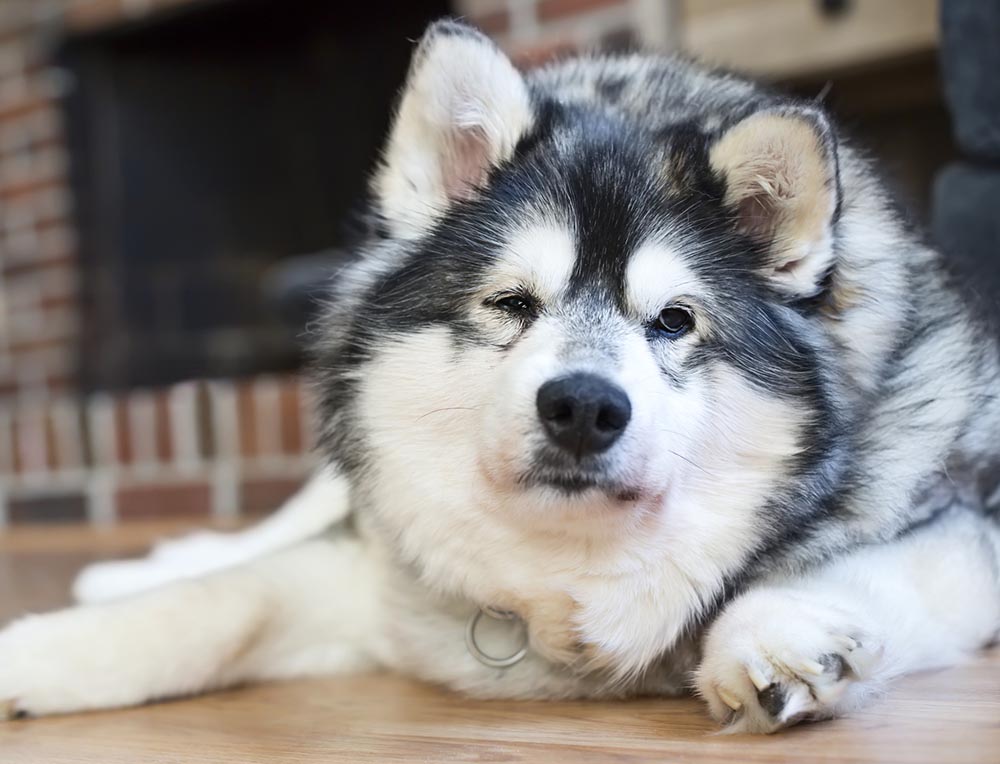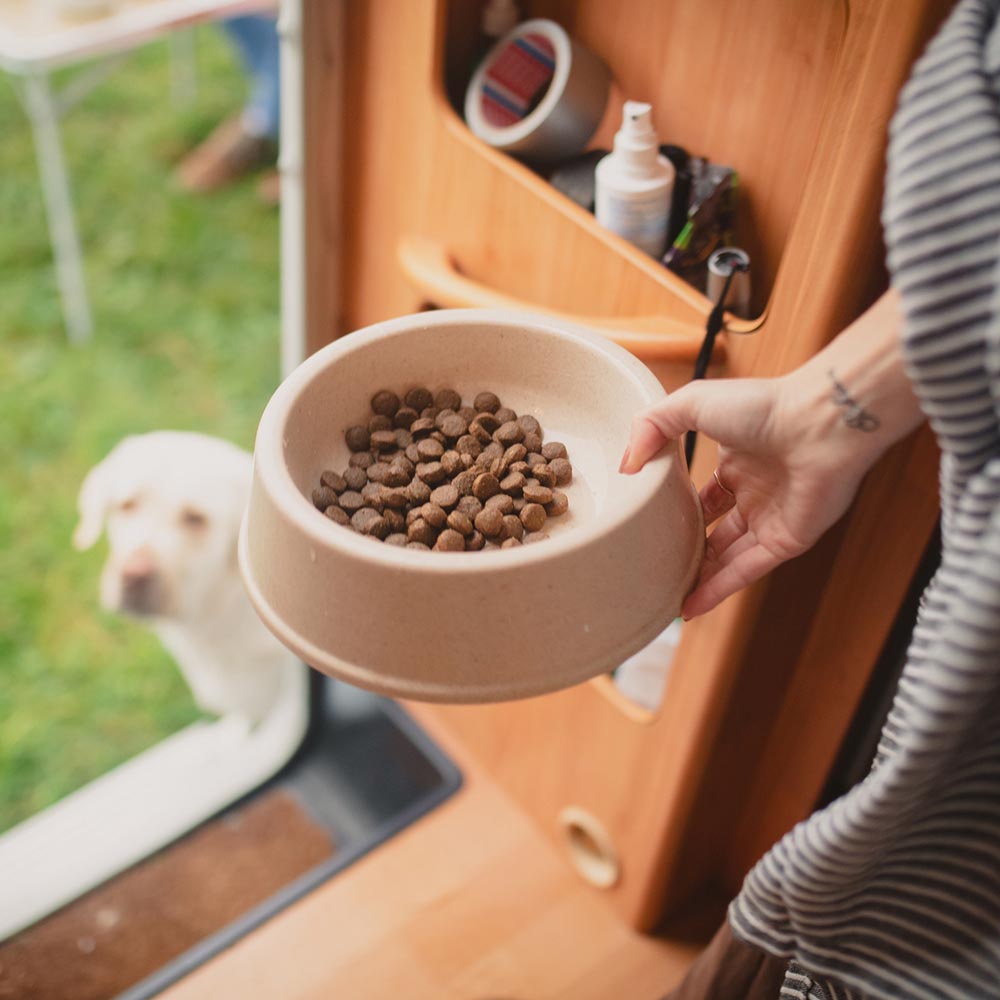What is Gastric Dilatation-Volvulus (Bloat)?
Gastric dilatation-volvulus (GDV) is a serious condition and is fatal if left untreated. Commonly referred to as "bloat," GDV occurs when a dog's stomach fills with gas, food, or fluid and subsequently twists. GDV develops without warning and can progress quickly. It is always an emergency.
Stomach distension alone is referred to as a “simple bloat”, or dilatation. This simple bloating can occur on its own and may resolve on its own. According to Maureen Luschini, VMD, DACVECC, a board-certified specialist in veterinary emergency and critical care, bloat without twisting can still be life threatening but risk depends on the severity and duration. In some cases, it can last for hours without becoming life-threatening.
“The problem is that it can progress to a GDV, where the stomach twists and flips on its axis, at any time,” explains Dr. Luschini. “The pet owner will not know when that happens. That makes monitoring a bloat condition at home a very dangerous thing for an owner to do.”
It is this twisting and flipping of the stomach that creates a life threatening condition for your dog. When the stomach becomes severely distended with gas, fluid or food, it puts pressure on the surrounding organs and decreases blood flow to and from these organs. The twisted stomach is more severe, as this completely obstructs blood supply to major organs and can impact blood flow throughout the whole body resulting in shock. It is this condition that is referred to as gastric dilatation-volvulus (GDV).
“As the stomach expands, it puts pressure on several large arteries and veins. Blood supply is cut off to the stomach, toxic products build up, and tissues begin to die,” explains Dr. Luschini. “Dogs can go into shock very quickly once GDV occurs, and every minute without treatment increases the risk of further damage and potentially death.”

Causes of Bloat
Bloat can occur at any age, but is most often seen in middle aged dogs. Research from Purdue University found that risk increased 20% per each year of age. The American College of Veterinary Surgeons states that nearly all breeds have been reported to have had gastric dilatation (with or without volvulus), but the condition is seen most commonly in large breed dogs with deep chests. These dogs are normally much taller than they are wide, creating a high “height to width ratio.” According to the American Kennel Club, Great Danes are 5 to 8 times more likely to bloat than a dog with a low height to width ratio.
Despite continuing research, the specific cause of GDV is not known. Risk factors which are thought to contribute to bloat include:
- eating very quickly
- overeating
- drinking a large quantity of water in a short period of time
- raised food bowls
- stress (anxious dogs are thought to be more prone, as are dogs in stressful situations or environments such as boarding kennels)
- exercising after eating
- genetic factors
- increased age
Signs of Bloat
GDV develops without warning and can progress very quickly. Recognizing the early signs is essential to increasing the chances your dog will survive. Signs in the early stages of bloat can include:
- restlessness
- pacing
- swollen or distended abdomen
- painful abdomen
- overall look of distress
- retching or attempts to vomit with no success
- excessive drooling
- panting or rapid breathing
- collapse/inability to stand

Treatment of Bloat
Treatment for GDV should be sought out as soon as possible to increase the dog's chance of survival. The severity of the case determines the treatment recommendation for the affected dog. At VMC, we aim for rapid confirmation of diagnosis, attending to patient comfort (by release of as much gas pressure as possible and with pain medications), and for rapid stabilization and preparation for surgery. Dogs that are bloated without volvulus can normally be treated non-surgically.
“Once we have the owner’s OK to pursue treatment, we have these dogs diagnosed and in a much more comfortable state in a matter of minutes. At the VMC, we perform as a well-oiled machine when bloat is of primary concern,” says Dr. Luschini. “Once we have more definitive diagnostics and are managing the dog’s comfort and vitals, we can discuss treatment and overall prognosis with the pet owners. There are some definitive diagnostic indicators that can tell us that we are dealing with a high-risk surgery with a low probability of success. We want the pet owner to be able to make an educated decision about proceeding with surgery in those cases.”
There are some definitive diagnostic indicators that can tell us that we are dealing with a high-risk surgery with a low probability of success. We want the pet owner to be able to make an educated decision about proceeding with surgery in those cases.
Maureen Luschini, VMD, DACVECC
Surgery is required to untwist the stomach and return it to its appropriate position. The surgery also allows the veterinarian to assess the amount of damage caused by the lack of blood flow due to the twisted stomach. If there is any tissue that is damaged it will be removed. In extreme cases where the condition has been left untreated for a longer time period, there may be too little live tissue to salvage. With appropriate pre-surgical diagnostics, pet owners can be informed of this risk in most cases prior to pursuing surgery.
Generally, a gastropexy is also performed during the surgical procedure. During a gastropexy, the stomach is sutured to the abdominal wall. This is designed to keep the stomach in place and prevent twisting of the stomach if bloat occurs again. The success rate of preventing the recurrence of a GDV is 95%.
“I strongly recommend that all giant breeds and other at risk breeds have a preventive gastropexy performed,” says Timothy Robinson, DVM, DACVS, board-certified specialist in veterinary surgery. “This procedure can be done at the time of neutering or on its own, and I would much rather see healthy dogs in the operating room for this procedure, than see them in critical condition during a GDV surgery.”
Prognosis
Dogs with GDV who do not receive treatment will not survive. However, up to 80% of dogs that receive prompt treatment of the condition do survive.
According to the American College of Veterinary Surgeons, the risk for complications increases as “disease severity and time increase.” Factors that have been shown to contribute to poor outcomes include patients:
- with clinical signs for more than 6 hours
- with cardiac arrhythmias prior to surgery
- requiring removal of a portion of the stomach due to loss of blood supply
- requiring removal of the spleen
Of course, for pets with other medical conditions, the prognosis can vary. Dogs (especially those with any of the risk factors above) may also require intensive care after surgery, including the possible need for blood transfusions and other specialized care.
Preventing Bloat
Preventative measures can be taken to reduce the risk of bloat. Some strategies that are currently recommended are:
- Feed smaller meals more frequently, and restrict activity for 1-2 hours after meal time.
- Do not use a raised food bowl.
- Never let the dog drink a large amount of water all at once.
- Avoid strenuous exercise on a full stomach.
To lessen the severity of bloat, a gastropexy is an excellent preventive. A gastropexy will help stop the stomach from twisting if bloat occurs 95% of the time. Many owners of large breeds of dogs routinely opt to have the surgery done when their dogs are young. This procedure is often performed at the time of neuter or spay, and this procedure can now be performed laparoscopically at the Veterinary Medical Center of CNY.
None of these measures will guarantee that the dog won't bloat, but they may help reduce the severity of the problem if it arises.

I would much rather see healthy dogs in the operating room for [a preventive gastropexy], than see them in critical condition during a GDV surgery
Tim Robinson, DVM, DACVS

Care for Dogs with Bloat
GDV is a life threatening condition. Without treatment the condition is fatal. Pet owners should be familiar with their nearest veterinary emergency facility in the event that their regular veterinarian is not available after hours or does not have experience handling this condition. If possible, call ahead and tell them you suspect bloat. Time is of the essence when dealing with cases of bloat, and the sooner your pet receives veterinary care, the better chance of a full recovery.
A true GDV is a condition that must be treated surgically in order for your dog to survive. Surgery and post-operative care are costly, and euthanasia is the only alternative that will prevent suffering for the dog. There is no conservative, or “wait and see” approach that will prevent pain, suffering, and eventual death. For those who own breeds in the high risk pool, we recommend budgeting for a preventive gastropexy rather than risking an expensive emergency surgery with an already compromised pet. Many pet insurance companies will also provide coverage for this preventive surgery.
